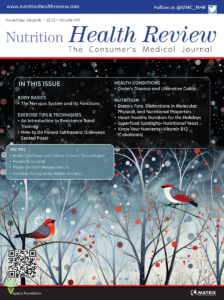What’s the difference between “Best if used by,” “Sell by,” and “Use by” dates on food packaging?
- A “Best if Used By/Before” indicates when a product will be of best flavor or quality. It is not a purchase or safety date.
- A “Sell-By” date tells the store how long to display the product for sale for inventory management. It is not a safety date.
- A “Use-By” date is the last date recommended for the use of the product while at peak quality. It is not a safety date except for when used on infant formula as described below.
With an exception of infant formula, if the date passes during home storage, a product should still be safe and wholesome if handled properly, until spoilage is evident. Spoiled foods will develop an off odor, flavor, or texture due to naturally occurring spoilage bacteria. If a food has developed such spoilage characteristics, it should not be eaten.
SOURCE: Reproduced from United States Department of Agriculture site. Food Product Dating. Last Modified Dec 14, 2016. https://www.fsis.usda. gov/wps/portal/fsis/topics/food- safety-education/get-answers/ food-safety-fact-sheets/food- labeling/food-product-dating/ food-product-dating. Accessed 18 Jan 2019. NHR
HOW TO SAFELY THAW FOOD
Never thaw or marinate foods on the counter. You might be surprised at this tip, but since bacteria can multiply rapidly at room temperature, thawing or marinating foods on the counter is one of the riskiest things you can do when preparing food for your family.
- Thaw in the refrigerator. This is the safest way to thaw meat, poultry, and seafood. Put the frozen food on a plate or pan that can catch any juices that might leak as it thaws and place it in the fridge. Normally, it should be ready to use the next day.
- Thaw in cold water. For faster thawing, you can put the frozen package in a watertight plastic bag and submerge it in cold water. Be sure to change the water every 30 minutes. Note: If you thaw this way, be sure to cook the food immediately.
- Thaw in the microwave. Faster thawing can also be accomplished in the microwave. Follow the instructions in your owner’s manual for thawing. Just like
with food thawed in cold water, food thawed in the microwave should be cooked immediately. - Cook without thawing. It is safe to cook foods from a frozen state—but obviously your cooking time will be longer (count on about 50% longer).
SOURCE: Food storage guide. Foodsafety.gov site. https://www.foodsafety.gov/keep/charts/ storagetimes.html. Accessed 18 Jan 2019.
WHEN TO REFRIGERATE/FREEZE YOUR FOODS
Did you know that illness-causing bacteria can grow in perishable foods within two hours unless the food is refrigerated? And if the temperature is 90 ̊F or higher, cut that time down to one hour! By refrigerating foods promptly and properly, you can help keep your family safe from food poisoning at home. Follow these tips to keep your family safe:
7 Refrigerate or freeze perishable foods within two hours. In the summer months, cut this time down to one hour. Cold temperatures slow the growth of illness causing bacteria, so it’s important to chill food promptly and properly.
7 Store leftovers within two hours as well. By dividing leftovers into several clean, shallow containers, you’ll allow them to chill faster.
7 You can freeze almost any food. Freezing food doesn’t mean that the food will be good to eat—or safe. In other words, if the food has already “turned” (been tainted by harmful bacterial), freezing is not going to “fix ” it—freezing does not destroy harmful bacteria. But it does keep fresh food safe from bacteria until you can cook it.
7 Pack your refrigerator and freezer with care. To properly chill food (and slow bacteria growth), cold air must be allowed to circulate around it. For this reason, it’s important not to over-stuff your refrigerator or freezer.
7 Keep your appliances at the proper temperatures. Your fridge should be between 40 ̊F and 32 ̊F, and your freezer should be 0 ̊F
or below. Appliance thermometers help you know if the fridge and freezer are cold enough.
SOURCE: Food storage guide. Foodsafety.gov site. https://www.foodsafety.gov/keep/charts/storagetimes.html.
Accessed 18 Jan 2019.





